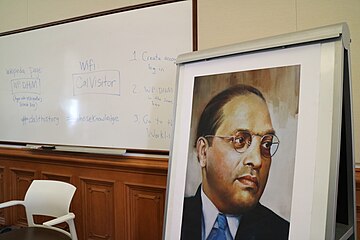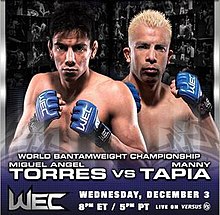멀티레벨 몬테카를로법
Multilevel Monte Carlo method수치해석에서의 다단계 몬테카를로(MLMC) 방법은 확률적 시뮬레이션에서 발생하는 기대치를 계산하기 위한 알고리즘이다.몬테카를로 방법과 마찬가지로 반복적인 무작위 표본 추출에 의존하지만, 이 표본들은 다른 수준의 정확도로 채취된다.MLMC 방법은 대부분의 표본을 낮은 정확도와 그에 상응하는 낮은 비용으로 채취함으로써 표준 몬테카를로 방법의 계산 비용을 크게 줄일 수 있으며, 매우 적은 표본을 높은 정확도와 그에 상응하는 높은 비용으로 채취할 수 있다.
목표
다층 몬테카를로 방법의 목적은 확률적 시뮬레이션의 출력인 임의 변수 의 기대값 [ G 에 근사하는 것이다.Suppose this random variable cannot be simulated exactly, but there is a sequence of approximations with increasing accuracy, but also increasing cost, that converges to as . The basis of t다단계 방법은 [1]텔레스코핑 합 정체성이고
기대 연산자의 선형성 때문에 사소한 것으로 만족하는 것.그런 다음 E - - -1 {\{Eell }- -1은 몬테카를로 방법으로 근사하게 계산되어 다층 몬테카를로법이 된다.{\ }에서 차이 G \ -- {\{\ \1{\}의 표본을 추출하려면 G_ G - {\laystylease G_{{\laystylaystyleaneon -1}의 시뮬레이션이 필요하다
The MLMC method works if the variances as , which will be the case if both and approximate the same random variable . By the Central Limit Theorem, this implies that one needs fewer and fewer samples to accurately approximate the expectation of the difference as . Hence, most samples will be t레벨 에 대한 aken 여기서 샘플은 가격이 저렴하고 가장 우수한 L 에서는 극히 적은 샘플만 필요할 것이다 이러한 의미에서 MLMC는 재귀적 제어 변수 전략으로 간주될 수 있다.
적용들
MLMC의 첫 적용은 옵션가격결정 확률적 미분방정식([2]SSE)의 맥락에서 Mike Giles에 기인하지만, 초기 추적은 파라메트릭 통합의 맥락에서 하인리히의 연구에서 발견된다.[3]Here, the random variable is known as the payoff function, and the sequence of approximations , use an approximation to the sample path with time step - .
불확실성 정량화(UQ) 문제들에 대한 MLMC의 적용은 연구의 활성 영역이다.[4][5]이러한 문제의 중요한 프로토타입적 예로는 무작위 계수를 갖는 부분 미분방정식(PDE)이 있다.이 맥락에서 임의 G 은 관심의 양으로 알려져 있으며, 근사 순서는 서로 다른 메쉬 크기를 가진 PDE의 분석에 해당한다.
MLMC 시뮬레이션 알고리즘
MLMC 시뮬레이션을 위한 간단한 레벨 적응 알고리즘은 다음과 같은 유사 코드에 제시되어 있다.
repeat Take warm-up samples at level Compute the sample variance on all levels Define the optimal number of samples on all levels L_에 따라 각 samples {\{\에 따라 추가 샘플을 채취한 다음, }이가)가 융합되지 않으면 융합 종료됨
MLMC 확장
최근 다층 몬테카를로 방식의 확장에는 [6]한 방향 이상의 미세화가 고려되는 다중지수 몬테카를로, 준몬테카를로 방식과 MLMC의 결합이 포함된다.[7][8]
참고 항목
참조
- ^ Giles, M. B. (2015). "Multilevel Monte Carlo Methods". Acta Numerica. 24: 259–328. arXiv:1304.5472. doi:10.1017/s096249291500001x.
- ^ Giles, M. B. (2008). "Multilevel Monte Carlo Path Simulation". Operations Research. 56 (3): 607–617. CiteSeerX 10.1.1.121.713. doi:10.1287/opre.1070.0496.
- ^ Heinrich, S. (2001). "Multilevel Monte Carlo Methods". Lecture Notes in Computer Science (Multigrid Methods). Lecture Notes in Computer Science. Springer. 2179: 58–67. doi:10.1007/3-540-45346-6_5. ISBN 978-3-540-43043-8.
- ^ Cliffe, A.; Giles, M. B.; Scheichl, R.; Teckentrup, A. (2011). "Multilevel Monte Carlo Methods and Applications to Elliptic PDEs with Random Coefficients" (PDF). Computing and Visualization in Science. 14 (1): 3–15. doi:10.1007/s00791-011-0160-x.
- ^ Pisaroni, M.; Nobile, F. B.; Leyland, P. (2017). "A Continuation Multi Level Monte Carlo Method for Uncertainty Quantification in Compressible Inviscid Aerodynamics" (PDF). Computer Methods in Applied Mechanics and Engineering. 326 (C): 20–50. doi:10.1016/j.cma.2017.07.030. Archived from the original (PDF) on 2018-02-14.
- ^ Haji-Ali, A. L.; Nobile, F.; Tempone, R. (2016). "Multi-Index Monte Carlo: When Sparsity Meets Sampling". Numerische Mathematik. 132 (4): 767–806. arXiv:1405.3757. doi:10.1007/s00211-015-0734-5.
- ^ Giles, M. B.; Waterhouse, B. (2009). "Multilevel Quasi-Monte Carlo Path Simulation" (PDF). Advanced Financial Modelling, Radon Series on Computational and Applied Mathematics. De Gruyter: 165–181.
- ^ Robbe, P.; Nuyens, D.; Vandewalle, S. (2017). "A Multi-Index Quasi-Monte Carlo Algorithm for Lognormal Diffusion Problems". SIAM Journal on Scientific Computing. 39 (5): A1811–C392. arXiv:1608.03157. doi:10.1137/16M1082561.

![{\displaystyle \operatorname {E} [G]}](https://wikimedia.org/api/rest_v1/media/math/render/svg/914992f4461a41f36a9e5cb4c0592d5fda2ac8a6)


![{\displaystyle \operatorname {E} [G_{L}]=\operatorname {E} [G_{0}]+\sum _{\ell =1}^{L}\operatorname {E} [G_{\ell }-G_{\ell -1}],}](https://wikimedia.org/api/rest_v1/media/math/render/svg/6e591489ee50d6cc71ce8d639a10c9a6e02744fb)
![{\displaystyle \operatorname {E} [G_{\ell }-G_{\ell -1}]}](https://wikimedia.org/api/rest_v1/media/math/render/svg/b27cfc405812914948bba29f3394728e07667865)
 차이 G \ -
차이 G \ -


![{\displaystyle \operatorname {V} [G_{\ell }-G_{\ell -1}]\rightarrow 0}](https://wikimedia.org/api/rest_v1/media/math/render/svg/573749ba0976cff3f12eb8836787bd76af071478)














